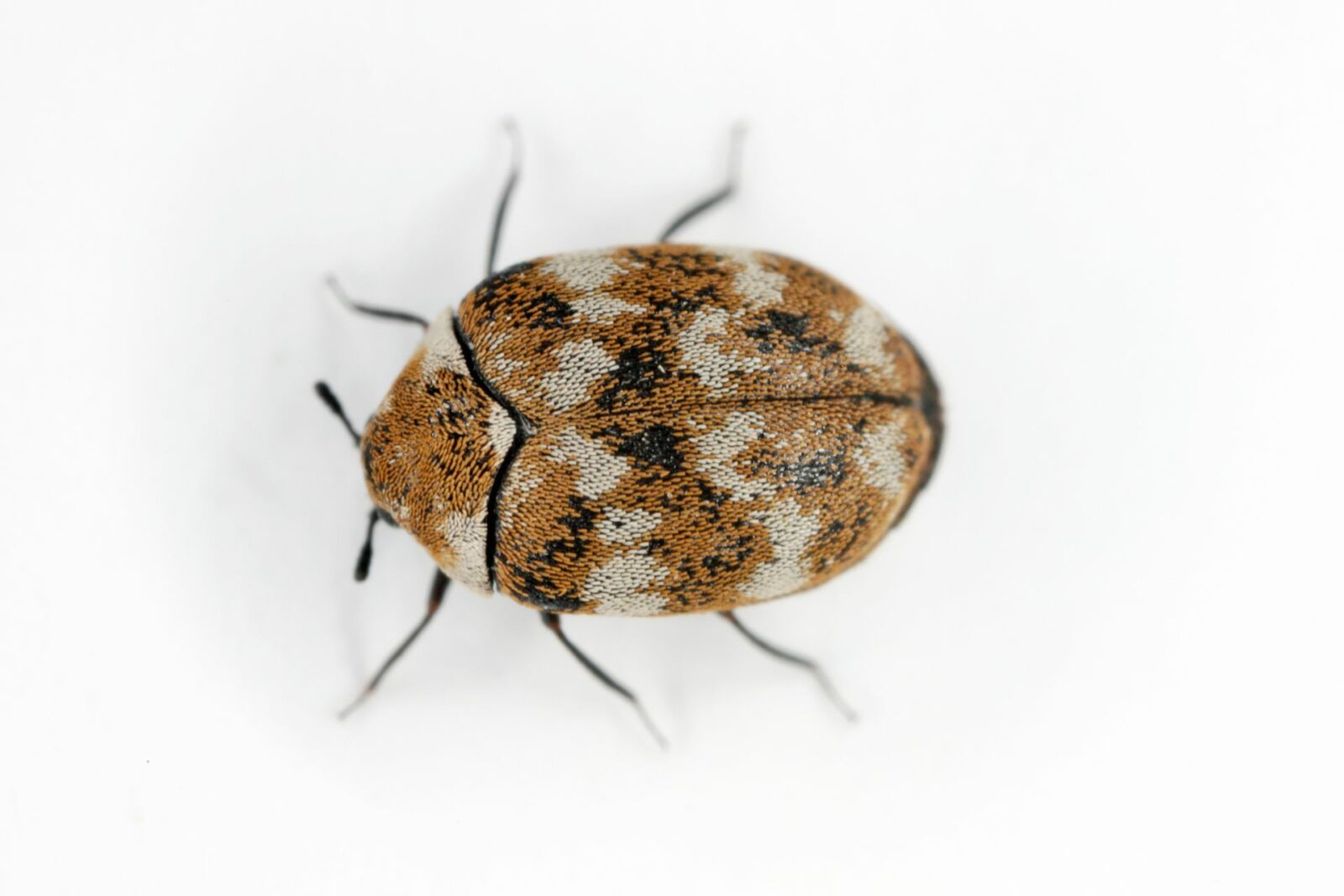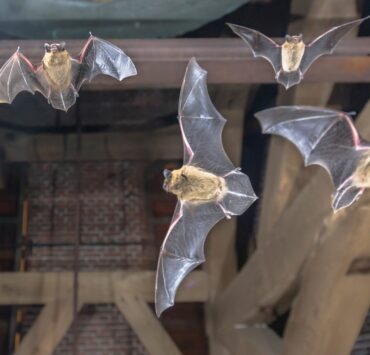Despite their small size, carpet beetles are pests you don’t want proliferating in your home. Carpet beetles may be tiny, but they’re destructive. As their name suggests, these tiny critters eat and damage materials like your carpets, rugs, upholstery, curtains and even clothes. This article explores what carpet beetles are as well as effective strategies for elimination and prevention if you’ve got these unwelcome guests in your home.
What are Carpet Beetles?
Carpet beetles are notorious for their voracious appetite. They feed on natural fibers such as wool, silk, fur, and feathers, as well as synthetic materials. Carpet beetles also will be attracted to food crumbs as well as indoor plants. As you may have guessed, despite their name, carpet beetles will be happy to reside, consume and infest various parts of your home.
Hazards of Carpet Beetles
As if the damage to your home wasn’t enough, carpet beetle larvae pose some health concerns. Carpet beetle larvae in particular can cause contact dermatitis and various skin irritations. Carpet beetle larvae is an allergen as well and can cause an allergic reaction on the skin as well as aggravate asthma for more sensitive individuals.
Signs of Carpet Beetle Activity
To effectively combat a carpet beetle infestation, it’s crucial to recognize the signs of their presence. Be on the lookout for the following indicators:
- Visible damage: Inspect your carpets, furniture, and clothing for irregular holes or signs of wear. Carpet beetles, especially their larvae, can chew through a variety of natural and synthetic fibers, causing damage that can be costly to repair or replace.
- Shed skins: As carpet beetle larvae grow, they molt and shed their skin multiple times. These shed skins are often found near the infested area and can resemble tiny, hollow replicas of the larvae. Accumulations of shed skins can indicate an ongoing or previous infestation.
- Fecal pellets: Carpet beetle droppings are pellet-like clusters that are most concentrated in areas a carpet beetle infestation is most prominent. If you suspect you have carpet beetles in your home and see signs of damage, look out for leavings as well to determine if you have a carpet beetle issue.
- Adult beetles: Adult carpet beetles are easiest to spot as they tend to gravitate near windows and other light sources. If you spot them, bear in mind that you may have more carpet beetles in your home that you’re unaware of.
- Eggs: Although not as easily spotted as other signs, carpet beetle eggs can sometimes be found in dark, secluded areas near suitable food sources. These eggs are small, white or cream-colored, and oval-shaped. Inspect carpets, upholstered furniture, and hidden corners for any signs of eggs.
How to Get Rid of Carpet Beetles and Carpet Beetle Larvae
Follow these steps to eliminate carpet beetles and their larvae from your home:
- Clean and vacuum: Thoroughly clean and vacuum all infested areas, paying close attention to corners, edges, and hidden spaces.
- Wash fabrics: Wash or dry clean infested clothing, linens, and other textiles to kill any remaining larvae.
- Use insecticides: Apply a mild insecticide, such as boric acid, to affected areas. Be sure to follow the manufacturer’s instructions, and then vacuum the areas well.
- Freeze items: Place small items or textiles in plastic bags and freeze them for at least 48 hours to kill any remaining larvae or beetles.
- 5. Steam clean: Steam clean carpets and upholstery to kill any lingering insects and sanitize the affected areas.
- Use traps: Set up carpet beetle traps in infested areas to capture and monitor the adult beetles.
- Seek professional help: If the infestation is severe or persistent, consider hiring a professional exterminator to assess and treat the problem.
Carpet Beetle Prevention Methods
Once you’ve successfully eradicated carpet beetles from your home, it’s essential to take preventative measures to avoid future infestations. Here are some tips to keep carpet beetles at bay:
- Regular cleaning: Vacuum and clean your home frequently, paying special attention to carpets, upholstered furniture, and other textiles.
- Proper storage: Store clothing and textiles in airtight containers or vacuum-sealed bags to protect them from carpet beetles.
- Inspect items: Check any second-hand furniture or clothing for signs of carpet beetles before bringing them into your home.
- Seal entry points: Seal any cracks or gaps around windows, doors, and vents to prevent adult beetles from entering your home.
- Monitor with traps: Regularly use carpet beetle traps to detect and monitor any new infestations early on.
- Use repellents: Cedar chips, lavender sachets, or other natural repellents can be placed in storage areas to deter carpet beetles.
By following these steps and preventative measures, you can successfully get rid of carpet beetles and keep your home free from these pesky pests. Protect your carpets, furniture, and clothing by maintaining a clean environment and staying vigilant to any signs of carpet beetle activity.







